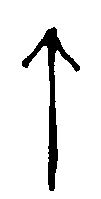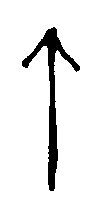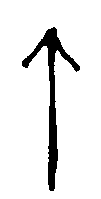The Psychology Book (18 page)
Read The Psychology Book Online
Authors: Unknown

PHILOSOPHICAL ROOTS 55
See also:
Jean-Martin Charcot 30 ■ Alfred Binet 50–53 ■ Sigmund Freud 92–99 ■ Thigpen & Cleckley 330–31 ■
Ernest R. Hilgard 337
Significantly, Lucie 3 could recall a
behavior as “the subconscious.” But
traumatic experience, while on
Sigmund Freud thought this term
vacation at the age of seven, when
was too vague, and instead labeled
she was terrified by two men who
the source of his patients' mental
were hiding behind a curtain.
traumas as the “unconscious.” Freud
also developed Janet's ideas,
These people are
Subconscious trauma
stating that dissociation was a
persecuted by something,
Lucie's childhood trauma, Janet
universal “defense mechanism.”
and you must investigate
concluded, was the cause of her
Janet’s work was neglected for
carefully to get to the root.
dissociation. As he wrote in
decades, as the use of hypnotism to
Pierre Janet
Psychological Automatism
: “To
investigate and treat mental illness
have one’s body in the posture of
was discredited. However, since
terror is to feel the emotion of terror;
the late 20th century, it has again
and if this posture is determined by
attracted interest from psychologists
a subconscious idea, the patient
studying dissociative disorders. ■
will have the emotion alone in his
consciousness without knowing
“Lucie,” for example, would usually
why he feels this way.” As her terror
be calm, but then suddenly became
took hold, Lucie would say, “I'm
agitated, crying and looking
afraid and I don't know why.” “The
terrified for no apparent reason.
unconscious,” said Janet, “is having
She seemed to have three distinct
its dream; it sees the men behind
personalities, which Janet named
the curtains, and puts the body in a
“Lucie 1,” “Lucie 2,” and “Lucie 3,”
posture of terror.” Janet added that
and would change between them
he believed traumatic events and
unexpectedly, especially when
stress could cause dissociation in
Childhood traumas
may appear to
hypnotized. Lucie 1 had only “her
anyone with that predisposition.
be forgotten, but according to Pierre
own” memories, as did Lucie 2, but
Janet described the part of the
Janet, they can often remain in the
Lucie 3 could remember events
mind that he believed was behind
“subconscious” part of the mind, giving
relating to all three personalities.
uncharacteristic and disturbed
rise to mental problems in later life.
Pierre Janet
Pierre Janet was born into a
Influenced by Jean-Martin
cultured, middle-class family in
Charcot, Janet extended his
Paris, France. As a child he loved
studies to include “hysteria,”
the natural sciences, and began
becoming director of Charcot's
collecting and cataloging plants.
laboratory at Paris's Salpêtrière
His philosopher uncle, Paul Janet,
Hospital in 1898. He also taught
encouraged him to study both
at the Sorbonne, and was made
medicine and philosophy, and
Professor of Psychology at the
after attending the elite École
Collège de France in 1902.
Normale Supérieure in Paris,
he went on to receive a master’s
Key works
degree in philosophy from the
Sorbonne. Aged just 22, Janet was
1893
The Mental State of
appointed Professor of Philosophy
Hystericals
at the Lycée in Le Havre, where
1902
Neuroses
he launched his research into
1907
The Major Symptoms
hypnotically induced states.
of Hysteria

BEHAVIO
RESPONDING TO
OUR ENVIRONMENT

RISM








